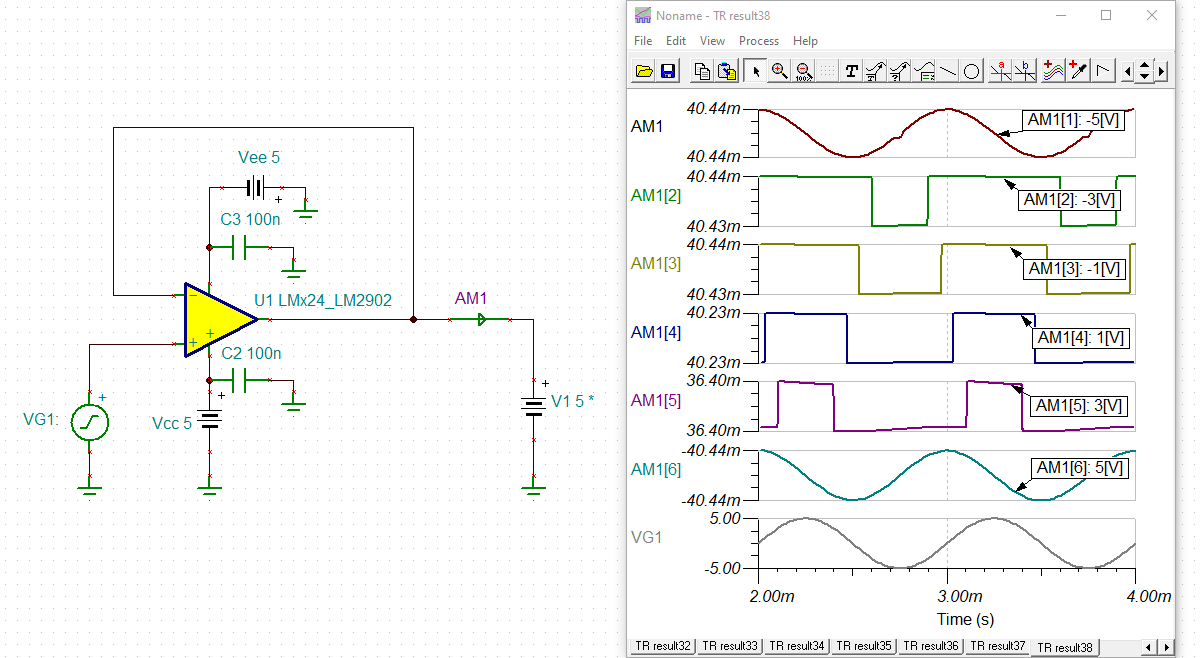Other Parts Discussed in Thread: TINA-TI
Hi team,
In the datasheet of LM2902, I noticed the we have a short-circuit output current ±40mA measured @ Vcc=5V, GND=-5V and Vo=0.
My question is
1. If we are using single power supply, Vcc=5V GND=0, is the short-circuit current remains the same?
2. When I look at other amps, this SPEC is usually noted @ Vo=Vcc or Vo=GND. Why we are noting Vo=0 here?
3. For LM2902KAVQPWR, is there any embedded short circuit protection? Is it safe for device to work at a shorted condition?
4. Is thermal (Vcc *Ios*thermal resistance) the right way to tell the working range of the device?
Thanks,
Brian
LM2902


